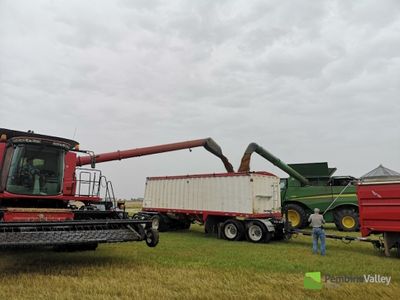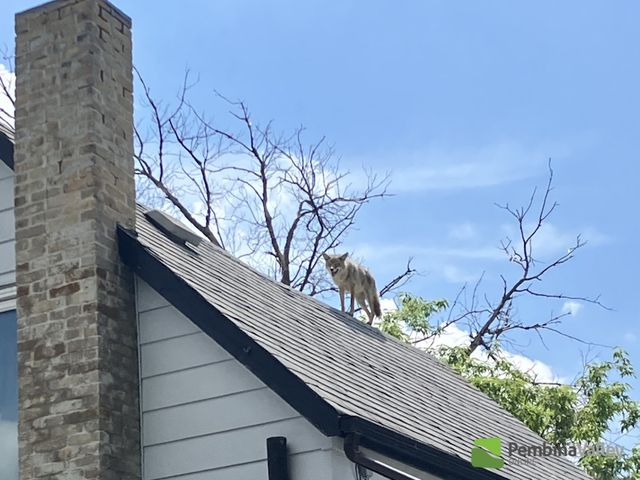Local News
No removal planned after local coyote sighting; officer shares coexistence tips
A recent resident report described a coyote sighting near the Morden Research Station while she was walking her dog. Staff at the research site also called it in, noting the animal didn’t immediately run off and was causing concern. Nicholas Woroniuk, a Manitou-based Conservation Officer with the Province of Manitoba, says officers followed up. “We went out to investigate the complaint and spoke to some employees from the area and spoke to the complainant,” he explained. “We couldn't confirm whether the coyote did have [mange] or not, and the behaviour that it was displaying wasn't of any real concern to us at that point.” No removal planned Woroniuk stressed there is no plan to remove the animal. “We aren't taking any kind of removal efforts in this situation with this coyote,” he said. “The behaviour that it was exhibiting wasn't anything that we're concerned about. It's kind of just normal coyote behaviour with no aggression.” Coyotes, he added, often pause and watch people, especially in places where they’re accustomed to human presence. “They're curious creatures… especially coyotes in urban environments… they're used to seeing people,” he said. Why coyotes show up in town While the province doesn’t keep exact coyote counts, Woroniuk noted they adapt well to edge-of-town landscapes like those around Morden and Winkler, with ravines, treed areas, fields, retention ponds, and lakes with plentiful deer, rabbits, and nesting birds. “These coyotes have everything that they need. They have cover, they have food. So, it is very common to see them thrive in these kinds of areas,” he said. How to coexist and keep pets safe Woroniuk’s guidance for residents is practical and calm. Make noise on sighting. “The biggest thing… is they learn by association,” he said. “Make sure that we're making noise, like yelling at them, making them feel uncomfortable, so they know to steer clear of humans.” Don’t feed wildlife (or leave pet food outside). Feeding teaches animals to associate people and yards with food. Leash your pets. “Make sure your pets are on a leash,” Woroniuk said. “It’s a normal dog behaviour, if it sees something it wants to chase it, and that will put us in a situation that we don't want to be in with the wildlife.” Walk with others and stay visible. Groups and conversations help prevent surprise encounters. Time your outings. Coyotes, like most wildlife, are most active at dawn and dusk; those concerned can avoid high-activity windows. “It’s a reality of living in communities like this… that coyotes are here. We do have wildlife in these communities,” Woroniuk said. “It's not something we need to be afraid of.” Related stories: Fewer wildfires burning in Manitoba this week than last week Southern Manitobans invited to join national nature challenge If you think an animal is unwell Residents who see wildlife acting unusually are encouraged to report it. “If you do see an animal that's acting oddly or that you suspect to be sick… phone the Turn in Poachers line or you can call the district office here in Manitou at 204-242-2950,” Woroniuk said. Photos, if safely obtained, help officers assess issues such as mange (often visible as hair loss and exposed, irritated skin). On disease concerns, Woroniuk noted, “As far as coyotes… in this area, we're not really that concerned about rabies.” He said rabies is more commonly carried by bats and skunks, and that canine distemper in foxes and raccoons can mimic rabies symptoms (disorientation, discharge around eyes and nose), which is why reporting is important so officers can investigate. The takeaway Wildlife has long shared our community spaces. Woroniuk’s message is steady: stay aware, don’t feed, keep pets leashed, make noise when you see a coyote, and choose walking times that lower the chance of encounters. “For the most part they stay clear of humans… It’s something we need to be aware of, not something we need to be afraid of,” he said. With files from Robyn Wiebe.








